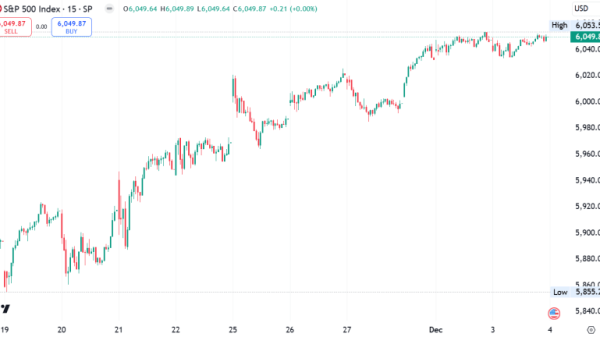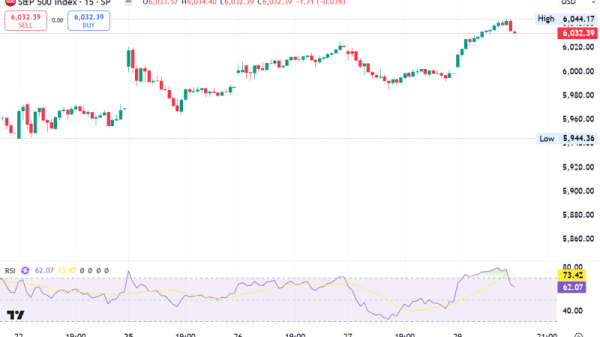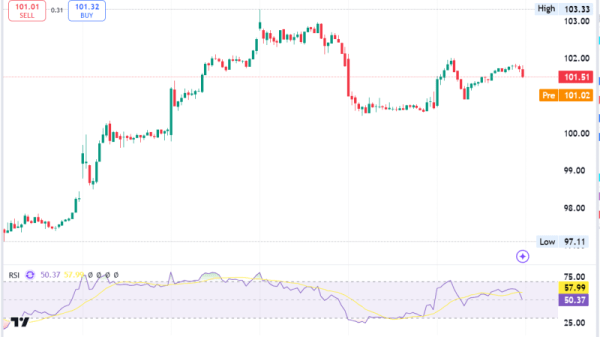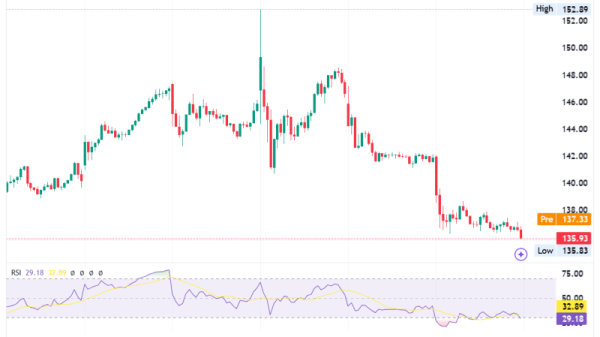Investing.com– U.S. stock index futures were marginally lower on Thursday evening after Wall Street closed largely unchanged amid soft trading volumes in a holiday-shortened week.
S&P 500 Futures inched 0.1% lower to 6,090.0 points, while Nasdaq 100 Futures fell 0.3% to 21,985.75 points by 19:27 ET (00:27 GMT). Dow Jones Futures edged 0.1% lower 43,668.0 points.
Wall St muted as tech pressured by higher treasury yields
Amid the absence of market-moving cues, investors reacted to a slight rise in U.S. government bond yields, including the benchmark 10-year Treasury yield, which reached 4.64% earlier—its highest level since early May.
However, a robust seven-year note auction in the early afternoon helped ease yields somewhat, with the 10-year Treasury yield settling at 4.59% by late afternoon.
Higher yields make bonds more attractive relative to equities, prompting a shift in investor capital away from tech stocks. Rising yields also translate into increased borrowing costs, which can constrain spending on innovation and expansion, further squeezing profit margins.
The major tech giants closed mostly lower, with Apple Inc (NASDAQ:AAPL) marginally higher despite an upgrade from tech-bull Wedbush.
Tesla Inc (NASDAQ:TSLA) stock fell 1.8%, while market darling NVIDIA Corporation (NASDAQ:NVDA) edged 0.2% lower.
Alphabet (NASDAQ:GOOGL) Inc Class C (NASDAQ:GOOG) shares were lower, while Arm Holdings (NASDAQ:ARM) stock declined 1.6%.
The S&P 500 closed largely unchanged at 6,037.59 points, while the NASDAQ Composite edged 0.1% lower to 20,020.36 points. The Dow Jones Industrial Average inched 0.1% up to 43,325.80 points.
Investors assess US jobless claims data
The weekly U.S. jobless claims data released before the market opened on Thursday saw a one-month low dip.
The Labor Department reported a decrease of 1,000 in initial applications for state unemployment benefits, bringing the seasonally adjusted figure to 219,000 for the week that ended on December 21. This figure is lower than the 224,000 claims that economists had predicted for the same week.
Meanwhile, the number of individuals receiving benefits after their first week of aid, which serves as an indication of hiring, increased by 46,000. This brought the seasonally adjusted total to 1.910 million for the week that ended on December 14, the highest since November 2021. Economists had previously anticipated the number of these continued claims to be 1.880 million.
Contrasting signals from the data backs the Fed’s view of leaning toward a cautious approach, holding rates steady while monitoring labor market trends.






































